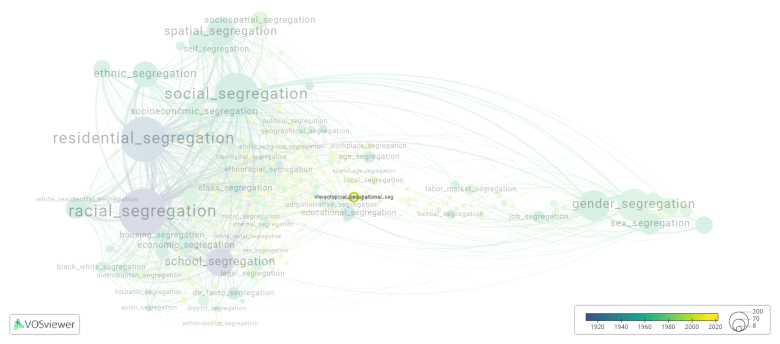Stereotypical occupational segregation: Difference between revisions
(Creating page) |
(Creating page) |
||
| Line 18: | Line 18: | ||
[[File:stereotypical_occupational_segregation.png|780x780px]] | [[File:stereotypical_occupational_segregation.png|780x780px]] | ||
This visualization is based on the study [[ | This visualization is based on the study [[Segregation_Wiki:About| The Multidisciplinary Landscape of Segregation Research]]. | ||
For the complete network of interrelated segregation forms, please refer to: | For the complete network of interrelated segregation forms, please refer to: | ||
Latest revision as of 07:17, 16 October 2024
Date and country of first publication[1][edit | edit source]
2013
India
Definition[edit | edit source]
Stereotypical occupational segregation refers to the phenomenon where certain occupations are predominantly populated by people of a particular gender, race, or ethnicity, based on societal stereotypes and expectations. This segregation can limit the career choices and opportunities available to individuals, reinforcing social inequalities and perpetuating stereotypes.
For example, certain professions like nursing, teaching, and social work are often stereotypically associated with women, while careers in engineering, computer science, and finance are typically seen as male-dominated. Similarly, certain racial or ethnic groups may be overrepresented or underrepresented in particular fields due to societal biases and stereotypes.
Stereotypical occupational segregation can result in unequal access to opportunities, pay disparities, and limited career advancement for individuals who do not conform to the normative expectations of their chosen field. Moreover, the perpetuation of these stereotypes can hinder diversity and inclusion efforts in the workplace, as well as reinforce gender, racial, and ethnic biases.
Efforts to address stereotypical occupational segregation involve promoting gender and racial equality, challenging stereotypes, and providing equal opportunities and support for individuals to pursue their chosen fields regardless of societal expectations. This can be done through educational programs, mentorship initiatives, diversity and inclusion policies, workplace training, and awareness campaigns.
See also[edit | edit source]
Related segregation forms[edit | edit source]
Stereotypical occupational segregation is frequently discussed in the literature with the following segregation forms:
This visualization is based on the study The Multidisciplinary Landscape of Segregation Research.
For the complete network of interrelated segregation forms, please refer to:
References[edit | edit source]
Notes[edit | edit source]
- ↑ Date and country of first publication as informed by the Scopus database (December 2023).
At its current state, this definition has been generated by a Large Language Model (LLM) so far without review by an independent researcher or a member of the curating team of segregation experts that keep the Segregation Wiki online. While we strive for accuracy, we cannot guarantee its reliability, completeness and timeliness. Please use this content with caution and verify information as needed. Also, feel free to improve on the definition as you see fit, including the use of references and other informational resources. We value your input in enhancing the quality and accuracy of the definitions of segregation forms collectively offered in the Segregation Wiki ©.
Stereotypical occupational segregation appears in the following literature[edit | edit source]
Kulkarni S., Hatekar N. (2013). Stereotypical occupational segregation and gender inequality: An experimental study. Economic and Political Weekly, 48(32), 112-120. https://doi.org/

